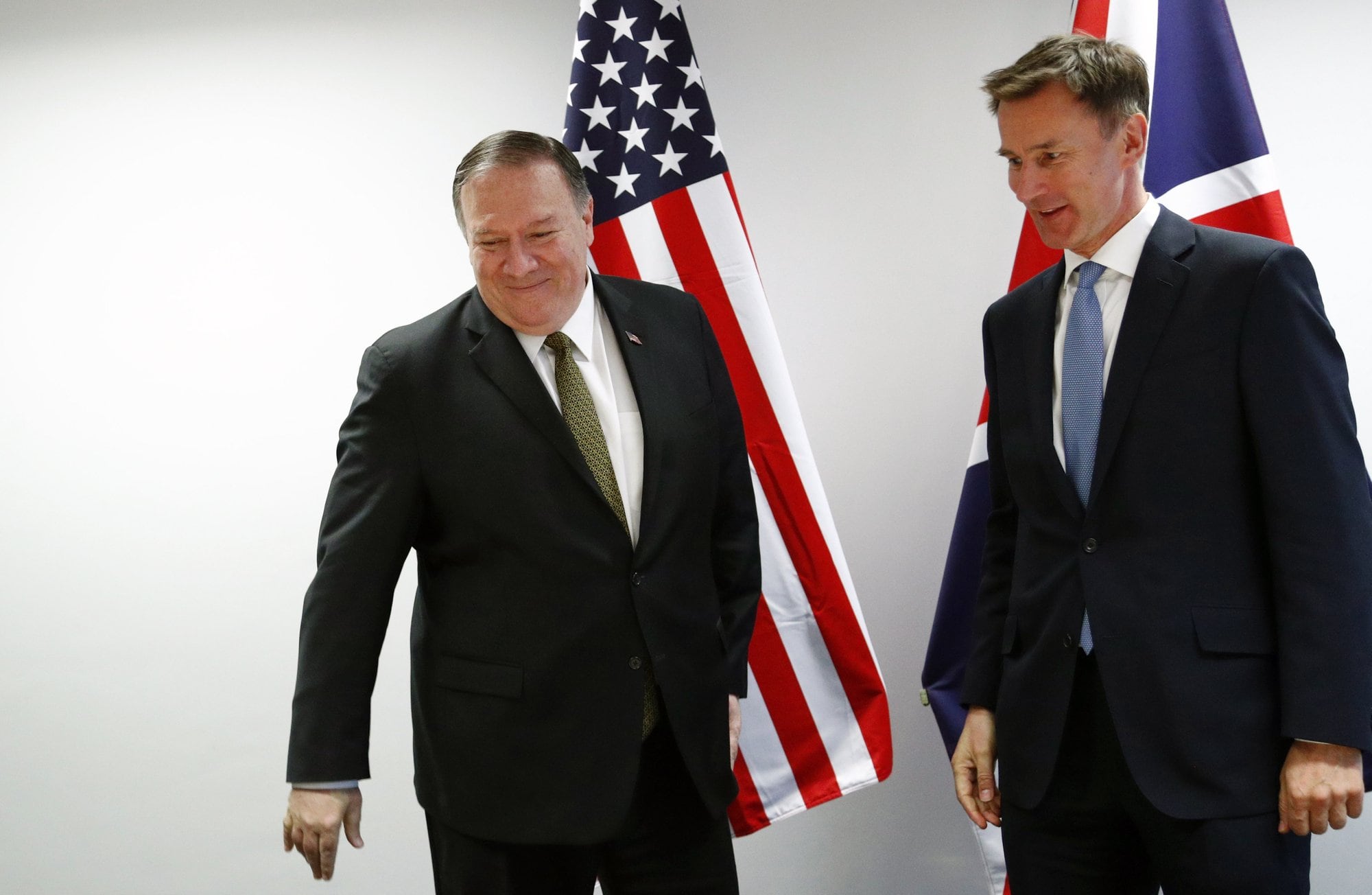The Pentagon recently presented a military plan to the president’s top national security aides that calls for up to 120,000 troops deploying to the Middle East and a potential crippling cyber-attack on Iran’s infrastructure should Iran speed up its nuclear program or attack U.S. forces.
Details of the briefing were first reported by the New York Times, which cited more than half a dozen American national security officials, granted anonymity, who have been briefed on the updated plans.
But today, President Donald Trump brushed aside the Times reporting in comments to the press.
“I think it’s fake news. OK? Now would I do that? Absolutely. But we have not planned for that. Hopefully, we’re not gonna have to plan for that, and if we did that, we’d send a hell of a lot more troops than that,” Trump said.
The updated plan comes as Iranian President Hassan Rouhani last week gave the remaining signatories to the 2015 nuclear deal 60 days to come up with a plan to buffer his country from sanctions imposed by Trump when he pulled out of the deal last year.
On Friday, the Pentagon announced it would deploy a Patriot missile battery to the Middle East to defend against Iranian threats. Officials also announced an amphibious ship would be sent to the region, adding better launch capabilities for Marines. The move comes after four Patriot batteries were removed from the region last fall.
RELATED

New Persian Gulf deployments will also include bombers and the aircraft carrier Abraham Lincoln.
Those shifts in resources came after a new intelligence report on May 3, Shanahan told Congress last week.
Iranian military leaders are calling U.S. assets in the region a target, according to Reuters, citing a report in the Iranian Students’ News Agency (INSA).
“An aircraft carrier that has at least 40 to 50 planes on it and 6,000 forces gathered within it was a serious threat for us in the past but now it is a target and the threats have switched to opportunities,” said Amirali Hajizadeh, head of the Guards’ aerospace division.
“If (the Americans) make a move, we will hit them in the head,” he added, according to ISNA.
Also, over the weekend, four oil tankers off of the coast of the United Arab Emirates were damaged in potential sabotage or attacks. The incident remains under investigation. The Iranian government has called it a, “regretful incident.”
“It’s going to be a bad problem for Iran if something happens,” Trump told reporters Monday in response to questions about the tankers.
The new intelligence report looks at Iran preparing its proxy forces. But officials told the Times that the most likely scenario that ends up in conflict would be after act or attack by the Islamic Revolutionary Guard Corps’ Navy.
The IRGC has a history of sending small, fast moving boats at U.S. Navy ships in the Gulf, attempting to provoke a military response.
It’s unclear if Trump himself has received the military plan briefing, based on the Times report. But a recent statement does not remove a military response.
“The president has been clear, the United States does not seek military conflict with Iran, and he is open to talks with Iranian leadership,” Garrett Marquis, a National Security Council spokesman, wrote in an email to the Times on Monday. “However, Iran’s default option for 40 years has been violence, and we are ready to defend U.S. personnel and interests in the region.”
At the same time, European allies have reportedly been talking with Secretary of State Mike Pompeo in efforts to deescalate any tensions and avoid any inadvertent overstepping on either side that could lead to conflict.
“We are very worried about the risk of a conflict happening by accident, with an escalation that is unintended really on either side,” said Jeremy Hunt, the British foreign secretary told reporters in Brussels, Belgium.
The updated military plans do not call for an Iraq War-style land invasion but instead focus on air strikes and a potential cyber-attack, which in previous plans had been called “Nitro Zeus” and would have attempted to disable major Iranian cities, military facilities and the power grid. That plan dates to at least 2010 or earlier, experts have said.
The cyber attack plan was previously considered as a way to hit Iran in the first hours of a conflict, reducing the need for much of the conventional attacks such as bombings and missile strikes, according to the Times.
But, experts have noted that Iran’s cyber capabilities have increased, pointing to attacks on financial markets in 2012, military targets and a Las Vegas casino. Experts testified to Congress this year that Iranian hackers are advanced enough now to hit U.S. targets.
The Times reports that Acting Secretary of Defense Patrick Shanahan presented the plan last Thursday in a meeting on “broader Iran policy.” The meeting included National Security Adviser John R. Bolton, Chairman of the Joint Chiefs of Staff Gen. Joseph E. Dunford Jr., C.I.A. Director Gina Haspel and Director of National Intelligence Dan Coats, according to the Times.
-Military Times Deputy Editor Leo Shane III contributed to this report
Todd South has written about crime, courts, government and the military for multiple publications since 2004 and was named a 2014 Pulitzer finalist for a co-written project on witness intimidation. Todd is a Marine veteran of the Iraq War.




